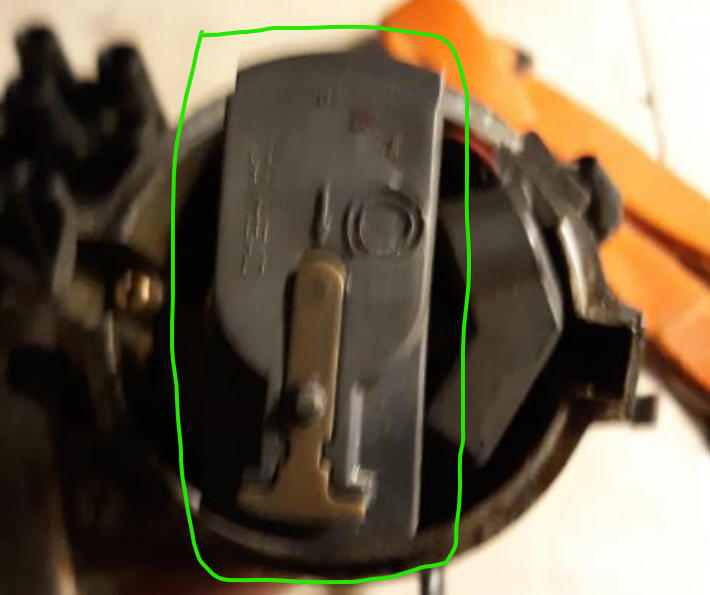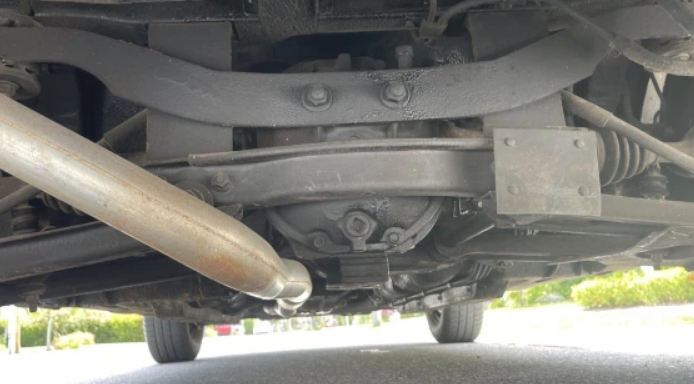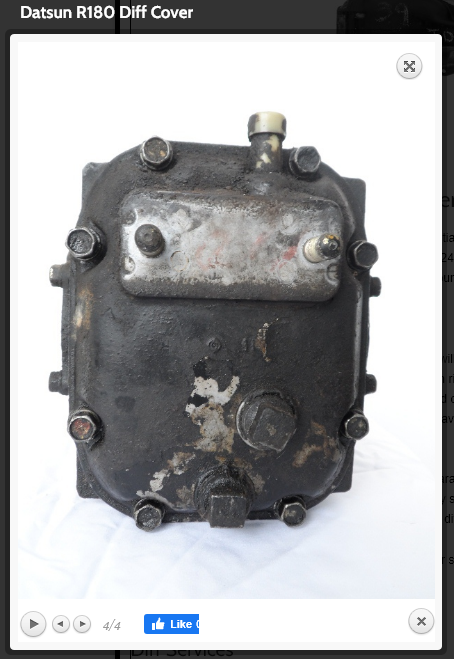Everything posted by Zed Head
-
260Z Firing order
- 260Z Firing order
- 260Z Firing order
Where the rotor points is #1.- 1974 260Z electronic ignition control unit help
Yours looks in pretty bad shape. But even the eBay one is old and could fail at any moment. Probably easier to wire in a GM HEI module. The eBay module might be from a 75 280Z. Looks like it would work though if the wires are the same. Here's a couple of links about the GM HEI module. No offense, but, considering your problems with plug wires I'm not sure you'll get the wiring correct. Be careful. https://www.classiczcars.com/files/file/64-1977-280z-replacing-the-tiu-with-a-hei-module/- 260Z Firing order
Leave the wires on the spark plugs. Disconnect all of the wires from the distributor cap. Reconnect the wires to the cap as shown in w3wilkes post #2. Put the rotor back on and make sure it points to #1 when the ignition timing mark is between zero and 10 degrees.- Cranks but wont start.
Sounds like your ignition timing is off. Turn the distributor body. That will change the trigger point and get the rotor pointed closer to #1.- 1978 stock alternator wiring
Turn over and crank mean the same thing. You probably mean "fire" or start, not turn over. Crank/turn over > fire/start > run. How long does it sputter? A split second? What happens if you squirt a bunch of fluid in? What is the actual fuel pressure number?- Cranks but wont start.
Still can't tell if the rotor electrode is pointing at the terminal your finger is on. It might also be that you need to turn the distributor. Get the cap in your hands and see if you think that the spark will jump to the #1 terminal when the timing mark is at 10 degrees. Or have a friend turn the distributor back and forth slowly while you crank the engine.- 260Z Firing order
(Edited to avoid exploding heads...) But, using the normal procedure is best, because then everyone else will understand it. w3wilkes post is the one you want, but you need to set your timing mark at zero on the damper pulley and confirm that you're on the compression stroke, then make sure that the rotor under the cap is pointing at the #1 terminal. Making sure the rotor is pointed at #1 is very important. It tells you if the oil pump shaft and distributor is installed correctly, like Mike described.- Cranks but wont start.
Show the distributor cap with #1 plug terminal identified, and confirm that the firing order is correct.- 260Z Firing order
You need to show the wires to the distributor to know if the firing order you used is wrong or not.- Gas Monkey 240Z seats
- Sorry nolan...
Looks like I'm about to get some makeup meme...- 240Z Tach Wiring After 123Ignition Install
Couldn't really tell from that diagram which is positive and which is negative. Why would negative or positive matter if it's just sensing power? (Edit - actually I don't really understand how that device works. Maybe it's "sensing" sparks? Current flow? Whatever it is, the positive side might work the same. @SteveJ @Captain Obvious ) If you have another load on the negative terminal of the coil that could screw up your tach signal. I'd disconnect that before you get too far along and see if it starts working. I don't know if the condenser will help you with that scheme. If it fixes the tach problem try using the positive side of the coil for the power signal. Edit - actually don't try this. It might be a direct short, depending on how the device works.- 240Z Tach Wiring After 123Ignition Install
Is it an inertia switch? It looks like it supplies power to the coil also. Have you disconnected/unplugged the factory ignition module? While you're down there you can also test continuity back to the coil negative. It's a branched circuit, one to the ignition module, one to the tachometer, one to the ECU. The condenser/capacitor on the blue wire is easy to setup. That's what worked on mine, with a GM HEI module. Any condenser from an alternator will work. The wire to the capacitor goes the coil negative, the capacitor can be mounted on the ground point on the manifold, nearby. It's a cheap quick test if you have one laying around. Won't hurt anything.- 240Z Tach Wiring After 123Ignition Install
By "tach sense" wire you mean the blue wire that heads back past the ignition module, right? What is this "fuel safety relay", and how is it connected/wired? That would be new to the system. The tachometer seems sensitive to the signal on that wire. You could disconnect it for a test and see what happens.- 280z Bosch Relay Correlation? Stock Relay vs Porsche Relay
AFM.- Union Sangyo oil filters
Here's the guts.- Sorry nolan...
It was just him and I and I had to leave. He was alone...- Sorry nolan...
- R180 Diff Plugs 240Z
Did your family do all of the service or did you take it to a shop or dealership for service? Does anyone in your family own a Subaru?- R180 Diff Plugs 240Z
Pickup trucks used the 4.11. 240Z's did not come with a 4.11. Nissan might have went with the recessed plug for looks. They even built a special shield just to cover a bolt head in the back on later cars. On a truck an ugly square head is not such a big deal. But, Whitehead is just using the same R180 picture for all of his R180 listings. So, who knows what's what there. https://whiteheadperformance.com/product/nissan-oem-3-54-r180-diff-differential-used-datsun-240z-260z-280z-280zx-510/ https://whiteheadperformance.com/product/nissan-oem-3-70-r180-diff-differential-used-datsun-240z-260z-280z-280zx-510/ https://whiteheadperformance.com/product/nissan-oem-3-90-r180-diff-differential-used-datsun-240z-260z-280z-280zx/ https://whiteheadperformance.com/product/nissan-oem-4-11-r180-diff-differential-used-datsun-240z-260z-280z-280zx/ 78 280Z with bolt head shield. Whithead's label implies it's just a stock photo he picked up somewhere.- Rust Advice 78 280z
What procedure are you using to adjust rocker arm clearance (lash)? If it ran fine before then your work must have done something to change something. Are you rotating the engine and camshaft as you measure and set lash to be sure that each lobe is on the base circle? Seems like a very loose rocker arm is the most likely possibility for that kind of noise and the work you did, considering that it "ran fine" before. Don't really see any other moving parts in the engine that you touched that could cause it.- Rust Advice 78 280z
That noise still sounds pretty solid. Like objects with large mass. I'm changing my guess to rod bearing. Or not. Can't really tell. Your videos are at idle. What happens if you rev the engine?- 260Z Tach Connector
Search "280Z tachometer" and you'll find pictures of the plug out of its socket. Might give you the confidence to pull harder. My tachometer used to stick when the weather got warm. The capacitive discharge ignition systems are well-known for causing tachometer problems. MSD, Crane, etc. Might be worth your while to reconnect the old ignition module and see if the problem goes away. - 260Z Firing order
Important Information
By using this site, you agree to our Privacy Policy and Guidelines. We have placed cookies on your device to help make this website better. You can adjust your cookie settings, otherwise we'll assume you're okay to continue.








